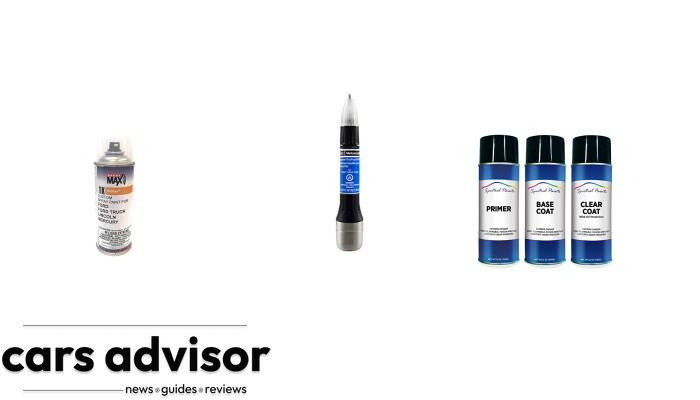Maintaining your BMW E46’s power steering system is essential for a smooth and safe driving experience, and a critical aspect of that process involves using the right power steering fluid.
This mighty elixir not only lubricates the multitude of moving parts within your car’s steering system but also helps prevent potential issues such as leaks or pump failure down the line.
Understanding BMW E46 Power Steering Fluid
To fully understand the importance of BMW E46 power steering fluid, one must first comprehend its purpose and function in lubricating and protecting the moving parts of the steering system, ensuring optimal performance while driving.
Purpose And Function Of Power Steering Fluid
Power steering fluid plays a crucial role in ensuring that my BMW E46’s steering system functions smoothly and efficiently. Its primary purpose is to serve as a hydraulic medium that transfers the force from the power steering pump to the steering gear, allowing me to effortlessly turn the wheel with minimal effort.
For example, when I’m driving around tight corners or navigating through busy streets, having a well-maintained power steering fluid ensures that my car responds accurately without putting too much strain on my arms or causing premature wear on its components.
With this in mind, it’s clear how essential it is for me to use high-quality fluids like Pentosin CHF 11S – which is specifically recommended by BMW – or ATF Dextron III / Mercon Automatic Transmission Fluid as alternatives.
Importance Of Using The Right Type Of Fluid For Your BMW E46
As a BMW E46 owner, it’s important to ensure that you’re using the right type of power steering fluid for your vehicle. The wrong type of fluid can damage the power steering system and lead to costly repairs in the long run.
Pentosin CHF 11S is recommended by BMW as the preferred hydraulic fluid for their vehicles, including the E46 model.
Using ATF (Automatic Transmission Fluid) or other non-recommended fluids may cause seal leakage, deterioration or corrosion on internal components.
Regularly checking and changing your E46’s power steering fluid will help maintain optimal functionality of the system while avoiding issues that can arise from using incorrect types of fluids.
Signs Of Power Steering Fluid Issues In Your BMW E46
If you experience difficulty turning the steering wheel, hear unusual noises when turning, or notice leaking fluid under your BMW E46, it could be a sign of power steering fluid issues – read on to learn how to identify and properly address these problems.
Difficulty Turning The Steering Wheel
I’ve had my fair share of experiences with difficulty turning the steering wheel in my BMW E46, and it’s not a pleasant feeling. One of the most common causes of this issue is low power steering fluid levels.
Another possible reason for difficulty turning could be an issue with the power steering pump or belt. If either of these components isn’t functioning correctly, it won’t provide enough pressure to assist you in turning your car effectively.
Unusual Noises When Turning The Wheel
I have found that unusual noises when turning the wheel can be a sign of power steering fluid issues in your BMW E46.
Ignoring these noises could lead to further damage and potentially costly repairs down the line. If you hear any strange sounds when turning your steering wheel, it’s important to check for power steering fluid leaks and ensure that your fluid levels are adequate.
Leaking Fluid
If you notice that your BMW E46 power steering system is leaking fluid, it’s important to address the issue immediately. A leak can cause a drop in power steering fluid levels, which can lead to poor performance of the system and potentially damage the pump or rack and pinion over time.
Leaks can occur due to damaged hoses or seals within the system. In some cases, it may be possible to repair the affected component instead of having to replace it entirely.
Regularly checking for leaks in your power steering system as part of routine maintenance can help prevent bigger issues down the road.
How To Check And Maintain Your BMW E46’s Power Steering Fluid
To ensure your BMW E46’s power steering system is working properly, it’s important to regularly check and maintain the power steering fluid levels. In this section, we’ll go over how to locate the power steering fluid reservoir, recommended mileage for changing the fluid, signs that indicate a need for a change, and tips for maintaining your power steering system.
Locating The Power Steering Fluid Reservoir
Finding the power steering fluid reservoir in your BMW E46 is a simple task that can be done with relative ease. The reservoir can usually be found towards the front of the engine compartment on the driver’s side.
It is usually a small, plastic container with a cap labeled “power steering” or something similar.
It is important to locate this reservoir so you can check and maintain your power steering fluid levels regularly. Checking your fluid levels will help you stay ahead of any potential issues such as leaks or low fluid levels, which could cause serious problems down the line.
Recommended Mileage And Time Intervals For Changing The Fluid
As a BMW E46 owner, it’s essential to know when to change your power steering fluid. The recommended mileage for changing the fluid varies depending on who you ask, but most experts suggest that it should be changed every 50,000 miles or every three years (whichever comes first).
Of course, this can vary based on driving habits and environmental factors.
It’s important to stick to these intervals as dirty power steering fluid can cause damage to the system over time. Neglecting this maintenance can lead to costly repairs down the line if ignored.
Don’t forget that regular checks of your power steering fluid levels are also critical in ensuring peak performance from your vehicle’s hydraulic systems.
Signs That Your Power Steering Fluid Needs Changing
I know how important it is to detect when your BMW E46’s power steering fluid needs changing, and that is why I want to share with you the signs to look out for. Here are some indications that your power steering fluid requires changing:
- Difficulty turning the steering wheel: If you notice that it takes more effort than usual to turn the wheel or if it feels stiff or jerky, then your power steering fluid may be low or contaminated.
- Unusual noises when turning the wheel: If you hear whining, groaning or squealing noises as you turn the wheel, this could indicate a low level of power steering fluid in your vehicle.
- Leaking Fluid: Check under your car for any signs of leakage around the power steering system components, such as hoses, gaskets or seals. Any type of leak in this system usually leads to a gradual loss of fluid and diminished performance.
- Increased temperature: Power steering systems rely on fluids to keep them cool during operation. If you feel heat coming from within the engine bay while driving or parking your vehicle, this could be an indication that your power steering system is overheating and in need of servicing.
- Dirty or discolored fluid: Old and contaminated fluid can become filled with debris and contaminants which can restrict proper flow through the power steering system components leading to diminished performance.
By keeping an eye on these signals that suggest changing the power steering fluid in your BMW E46 will ultimately help prevent costly mechanical damage down the line.
What Type Of Power Steering Fluid Should You Use? (Dex 3 ATF Or Pentosin CHF 11S)
As an owner of a BMW E46, it is vital to know what type of power steering fluid your car needs. Using the wrong type can cause damage and potentially even lead to expensive repairs down the line.
Dex 3 ATF has been traditionally used as power steering fluid for decades and is known for its compatibility with various vehicles. It can be used for E46 but may require more frequent changes compared to Pentosin CHF 11S, which is specifically designed for modern high-performance hydraulic systems like those found in newer BMW models.
One key advantage that Pentosin CHF 11S offers over Dexron III ATF is its ability to withstand extreme temperatures and pressures without breaking down or losing effectiveness over time.
Checking Fluid Levels And Quality
As someone who regularly maintains my BMW E46’s power steering system, one of the most important things I always pay attention to is checking the fluid levels and quality. Here are some steps you can take to check your BMW E46’s power steering fluid:
- Locate the power steering fluid reservoir – the reservoir is typically located on or near the engine, towards the front of the vehicle.
- Check the fluid level – once you have located the reservoir, remove the cap and check both the level and color of the fluid. The fluid should be at or above the minimum line on the dipstick.
- Inspect for any contaminants – also, while checking for levels, look to see if there are any metal flakes, debris or other contaminants in your power steering fluid.
- Smell for burnt smell- a burnt smell signifies that you may need a change of fluids as it is an indication that your fluids may have been overused.
- Check for discoloration – Discoloration could be sign that water has entered into your hydraulic pump through leaks in seals or worn out hoses.
- Replace or top up as necessary – if your power steering fluid is low or appears dirty, it may be time to replace it altogether, especially if it has been more than two years since your last replacement.
By performing these simple checks regularly and addressing any issues immediately, I’ve been able to extend my BMW E46’s power steering system life significantly while avoiding costly repairs down the road. And remember always use recommended fluids like Dexron III ATF or Pentosin CHF 11S for maximum efficiency and performance!
Topping Up Or Replacing Fluid As Necessary
Maintaining the proper level and quality of power steering fluid in your BMW E46 is crucial for smooth and effective steering. Here are some tips on how to top up or replace the fluid as necessary:
- Start by locating the power steering fluid reservoir, which is typically located near the front of the engine compartment.
- Check the fluid level by removing the cap on the reservoir and examining the dipstick. If it’s low, add more fluid slowly until it reaches the recommended level.
- Be sure to use only high-quality power steering fluid that meets BMW’s specifications, such as Pentosin CHF 11S or Dexron III ATF.
- If the power steering fluid is discolored or has a burnt smell, it may be time to replace it entirely. Consult your vehicle’s manual for recommendations on when to change out the fluid.
- To replace the power steering fluid, start by draining out all old fluid from the reservoir using a hand pump or other tool designed for this purpose.
- Then, refill with fresh power steering fluid until it reaches the recommended level on the dipstick.
- Run your BMW E46 for a few minutes to circulate the new fluid throughout the system before checking again and topping up if needed.
Remember that regular maintenance of your vehicle’s power steering system can help prolong its lifespan and prevent costly repairs down the line.
Tips For Maintaining Your BMW E46’s Power Steering System
Regularly checking and changing the power steering fluid, avoiding hard turns and rough road conditions, and addressing any issues immediately are crucial steps in maintaining your BMW E46’s power steering system.
Regularly Checking And Changing The Fluid
As a responsible BMW E46 owner, it is essential to check and change your power steering fluid regularly. Checking for any signs of leaks or reduced levels during routine maintenance can prevent costly repairs in the long run.
To change your power steering fluid, locate the reservoir and drain plug according to the instructions in your car’s manual. It is recommended to use Pentosin CHF 11S or Dexron III/Mercon Automatic Transmission Fluid as replacements for maximum effectiveness.
Regularly checking and changing your power steering fluid every 50k miles can also help prevent issues with other components such as the pump or rack-and-pinion assembly caused by contamination due to normal wear over time.
Avoiding Hard Turns And Rough Road Conditions
As an owner of a BMW E46, it’s important to avoid hard turns and rough road conditions as much as possible in order to maintain the health of your power steering system. Hard turns put excessive stress on the power steering pump, causing it to work harder than necessary and potentially leading to failure over time.
To prevent these issues from occurring, try taking corners at a slower speed and with a wider radius. This will reduce the strain on your power steering pump while still allowing you to navigate around bends safely.
Additionally, avoiding rough terrain or potholes as much as possible can help protect your vehicle’s overall health and prolong its lifespan.
Addressing Any Issues Immediately
As a BMW owner, it’s essential to address any power steering issues immediately to prevent further damage and costly repairs. If you notice unusual noises when turning the wheel or difficulty turning the steering wheel, it could be a sign of low power steering fluid or other problems.
One common reason for power steering issues is leaks in the system. Check for any visible signs of fluid leaks around the pump or hoses. Remember that replacing leaking components as soon as possible can save you from more significant problems down the road.
Conclusion
Proper maintenance of your BMW E46’s power steering fluid is crucial in ensuring a smooth and safe driving experience. By understanding the importance of using the right type of fluid, checking for signs of issues, and regularly maintaining the level and quality of fluid, you can avoid costly repairs down the road.
Don’t forget to use high-quality fluids like Pentosin CHF 11S or Dexron III ATF for optimum performance.





















